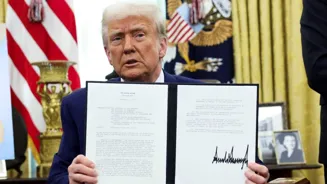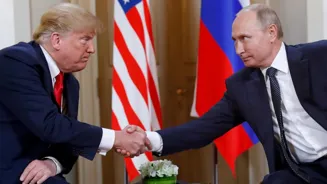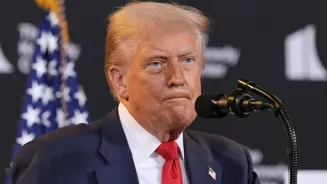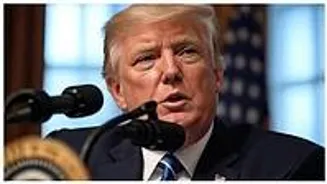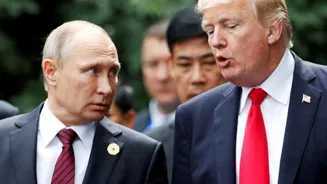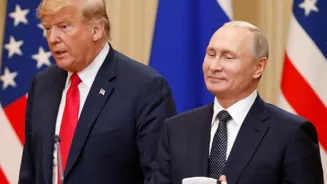The United States is expected to proceed with the imposition of an additional 25% tariff on Indian goods from August 27, despite recent diplomatic engagement at the Alaska summit and ongoing bilateral trade discussions. Sources
If enforced, the new tariff would effectively double the total US duties on Indian exports to 50%, significantly impacting key sectors and exporters. The penalty is part of an executive order tied to broader geopolitical developments, particularly the continued impasse in peace negotiations between the US, Russia, and Ukraine. With no resolution on that
Despite hopes that high-level discussions at the recent Alaska summit might ease tensions, no breakthrough was achieved on the tariff issue. However, there are indications from US statements post-summit that some secondary sanctions may be deferred, hinting at limited flexibility in Washington’s broader strategic posture.
Efforts are ongoing behind the scenes to avert the tariff hike. Negotiators
The delay in the formal trade meeting has raised concerns within India’s export community, as sectors such as textiles, pharmaceuticals, and engineered goods could be significantly affected if the higher tariffs come into force.
As the 27 August deadline approaches, all eyes are on whether the two sides can reach a temporary understanding — or whether Washington will proceed with penalties that could further complicate one of the world’s most strategically significant trade relationships.
Also read | Russian politicians hail Alaska summit as victory for Moscow
Talks are reportedly still ongoing between Indian and US officials, with negotiators seeking a potential reprieve from the additional duties. Discussions are also continuing
In an interview with Fox News’ Sean Hannity after the Alaskan Summit, Trump said that there were a few sticking points remaining after his discussion with Putin, even as he cautioned that the two hadn’t reached a deal, and shifted his focus to Zelenskyy, saying it was up to him to resolve the war.
Also read | Uncertainty looms over US secondary
The US has maintained its stance on the tariffs, with no official indication of a reversal so far. According to sources, the absence of a peace deal between the US, Russia, and Ukraine has further contributed to Washington's reluctance to modify its position on trade penalties.
Meanwhile, recent statements following the Alaska summit suggest that the US may be willing to defer certain secondary sanctions, although there has been no shift in its decision regarding the additional 25%
The situation remains fluid, and trade officials from both sides are expected to continue negotiations over the coming days in to ease tension and avoid the imposition of steep penalties that could affect key sectors of bilateral trade.
